
Three plastic bottles with characteristic sea turtle bites. Port Aransas, TX. Photo by Dave Pietruszynski 2017
While strolling along the beach in Port Aransas, Texas I came across three plastic bottles lying within 20 yards of one another. My reverie turned into anger and frustration as I looked more closely because each bottle had characteristic diamond-shaped holes, evidence that a sea turtle mistook the floating containers for food. Staring out at the Gulf, and thinking of the quantities of floating bottles and the few endangered sea turtles, it is easy to become discouraged. The most common bottles in the Gulf weren’t even among the three – the 12 oz clear plastic water bottle.
Plastic deadly for turtles
Plastic bottles are a major issue for the green sea turtles, and the Kemp-Ridley turtles along the Texas Coastal Bend. Frequently, plastic pieces get stuck in the digestive track of these turtles and while the turtle “feels full” it slowly starves to death because the plastic cannot be eliminated (Stamper, Spicer, Neiffer, Mathews, & Fleming, 2009).
Sea turtles once common, may become only symbols
Except in a zoo or aquarium, most of us rarely encounter turtles and we think about them even less frequently. However, turtles used to be a part of our “world view” and are prominent in creation myths for many cultures across the world including India, China, and the Americas, as symbols of strength, fertility, life, and death (“Sea Turtle,” 2017). There’s something about their deliberate slowness, their presence, and curiosity that attracts us in our frenetic world. The ancients listened to the silence of the turtles and learned. It’s time for us to listen again to them because now they are shouting, and very soon the turtles of the sea may only exist as symbols.and one of the major issues is ingestion of plastics.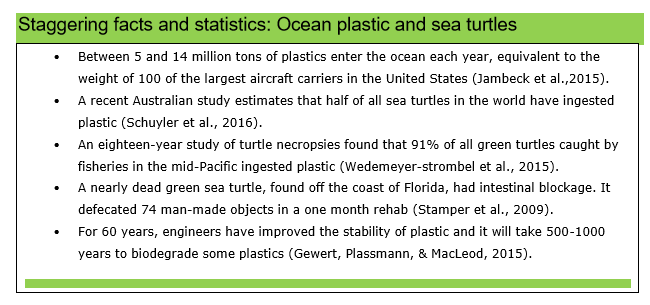
Monofilament line: a turtle trap
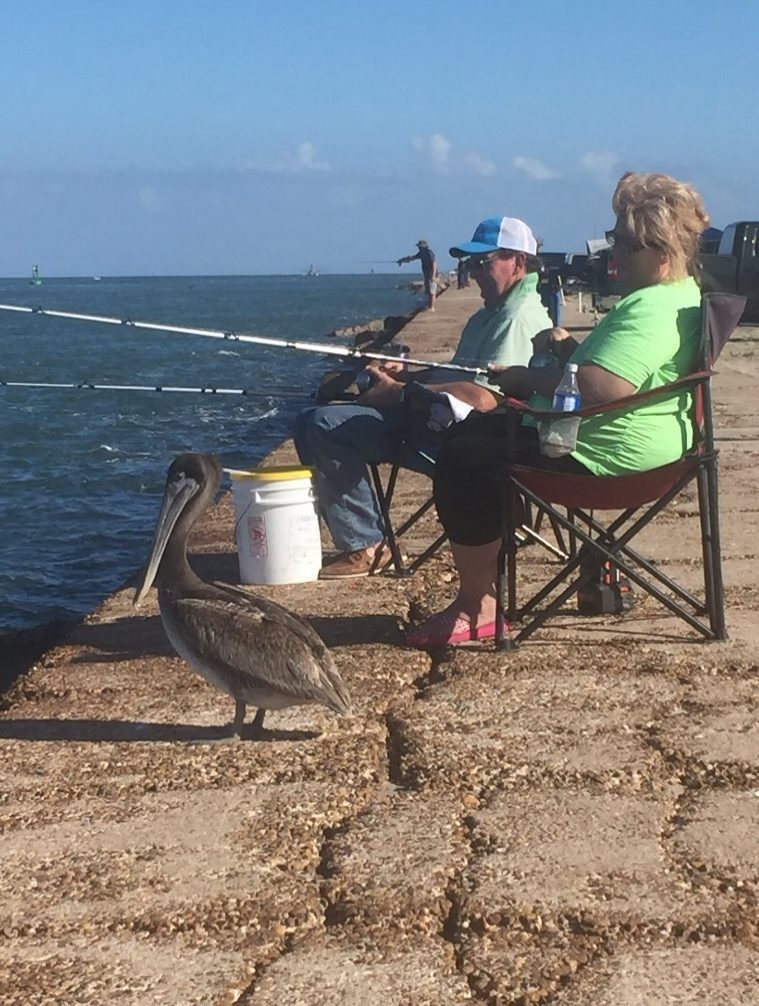
Aransas Pass Rock Jetty – a favorite spot for anglers of all types. Photo by Dave Pietruszynski 2016
Unfortunately, ingestion is not the only way that plastic will kill turtles. One of my favorite walks in Port Aransas, TX takes me out on the long jetty by the Aransas Pass ship channel adjacent to the University of Texas Marine Science Institute. Invariably I’ll strike up a conversation with an angler or two and it’s wonderful to hear their fish stories. If we get to the point where we’re looking out into the channel and nodding about the state of the world, a green sea turtle will often pop it’s head out near the rocks with its’ familiar perpetual smile. The smile is always returned! As I continue walking to the end of the rock jetty(nearly 1.5 miles out to sea!), I have encountered one or two anglers cutting their line because of an underwater snag on almost every hike. The monofilament fishing line is a danger to undersea life, particularly turtles as they forage for food. Fishing line tends to bunch up underwater on the same snag and the resulting ball of monofilament is a lethal turtle trap. The Animal Rehabilitation Keep (ARK) at the University of Texas Marine Science Institute is notified when turtles are found on the beach incapacitated and unable to swim because of entanglement.
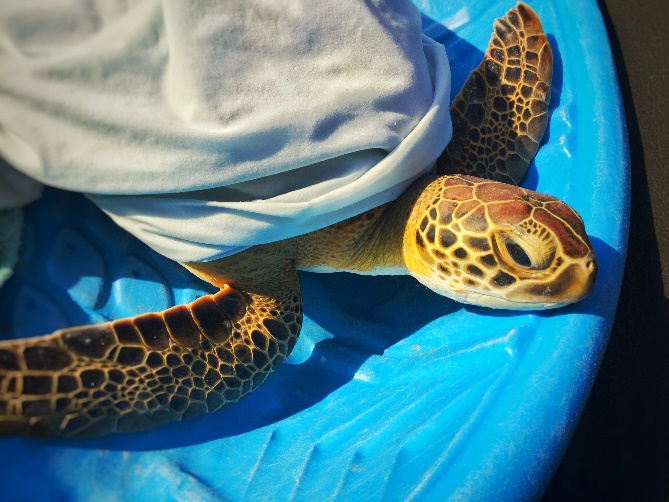
Green sea turtle ready for release into the ocean. A resident for a short time at the Animal Rehabilitation Keep (ARK) at the University of Texas Marine Science Institute. Port Aransas, TX Photo by Jen Knoedl 2017
What can we do?
In my experience one common response to the issue with ocean plastic and specifically with turtles, is a shrug with downcast eyes and a bit of despair because there are no easy solutions. The other active response is a commitment to not use plastics and a hopefulness that human use of plastics, specifically plastic drink bottles, will end as awareness increases. While both responses are understandable, I prefer hopefulness and an active response, and my reusable bottle is almost always clipped to my backpack. Recreational fisherman may have noticed a biodegradable fishing line that was on the market a couple of years ago called Bioline. It was taken off the market – a startup opportunity for someone!
Plastic, glass aluminum?
The solutions are not so simple. Should we end plastic bottle manufacture? If that is pursued, what is the replacement? It takes only a small amount of energy to make a plastic bottle. Other possibilities might be reusable glass, bioplastics made from corn, a new biodegradable petroleum-derived plastic, aluminum, or forms of paper containers. Each of these possibilities has financial as well as environmental costs and the arguments by the industries as to who is “greenest” are in full swing. The carbon footprint of a plastic bottle is small (Ivanov & Hartmann, 2016).
Still, the turtles are shouting! Within decades, unless we act, our oceans will become a cesspool of plastic and not only will sea turtles become extinct, but plastics are breaking into ever smaller pieces by wave action and are already part of the food chain that includes humans.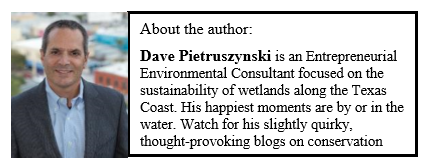
Although the existing plastic particles in the ocean may exist until the 2700’s, we may still have the chance to save turtles and healthy seas for future generations. The Reduce, Recycle, Reuse movement is a part of the solution and much more is needed. It will take systems thinking from all of us and we need more of the best and brightest in our society thinking on these issues. The shouts will fade without action – let the sea turtles be living symbols of life and rejuvenation again.
In my mind I can see those diamond-shaped turtle bites every time I hold a plastic bottle…
References:
Gewert, B., Plassmann, M. M., & MacLeod, M. (2015). Pathways for degradation of plastic polymers floating in the marine environment. Environmental Science: Processes & Impacts, 17(9), 1513–1521. https://doi.org/10.1039/C5EM00207A
Ivanov, I. G., & Hartmann, D. (2016). Two Green Bottles, Standing on a Wall: An Environmental Assessment of Two Bottle Types. South African Journal of Industrial Engineering; Bedfordview, 27(3), 303–314. https://doi.org/http://dx.doi.org.proxy.lib.duke.edu/10.7166/27-3-1633
Jambeck, J. R., Geyer, R., Wilcox, C., Siegler, T. R., Perryman, M., Andrady, A., … Law, K. L. (2015). Plastic waste inputs from land into the ocean. Science, 347(6223), 768. https://doi.org/10.1126/science.1260352
Sea Turtle: An Eternal Symbol. (2017, March 13). Retrieved October 2, 2017, from http://www.medasset.org/features/sea-turtle-eternal-symbol/
Stamper, M. A., Spicer, C. W., Neiffer, D. L., Mathews, K. S., & Fleming, G. J. (2009). Morbidity in a Juvenile Green Sea Turtle (Chelonia mydas) Due to Ocean-Borne Plastic. Journal of Zoo and Wildlife Medicine, 40(1), 196–198.
Wedemeyer-strombel, K. R., Balazs, G. H., Johnson, J. B., Peterson, T. D., Wicksten, M. K., & Plotkin, P. T. (2015). High frequency of occurrence of anthropogenic debris ingestion by sea turtles in the North Pacific Ocean. Marine Biology; Heidelberg, 162(10), 2079–2091. https://doi.org/http://dx.doi.org.proxy.lib.duke.edu/10.1007/s00227-015-2738-1
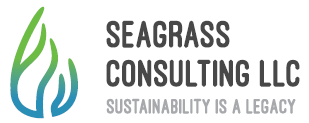
Interesting post flavored with history, ecology, humanity and compassion. I dream of a world where most humans can be more caring of their natural environment. Can the dream become a reality?